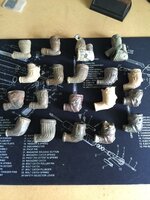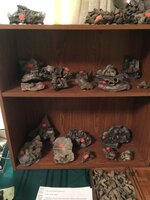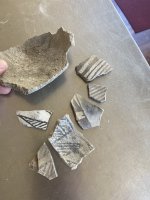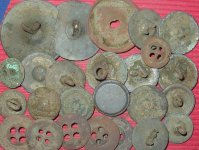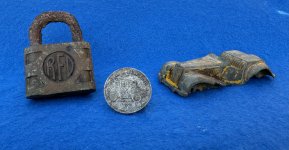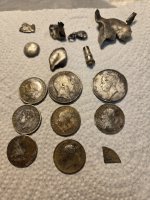I went to a rare estate sale from Parker Melvin. I picked up quite a few clay pipes that he had dug up. There were thousands of pipes at the sale, from his dig at Point Pleasant. I plan on going back tomorrow and getting the pipes that had melted together from the original fire in the kiln (pic provided).
Attachments
Upvote
0


